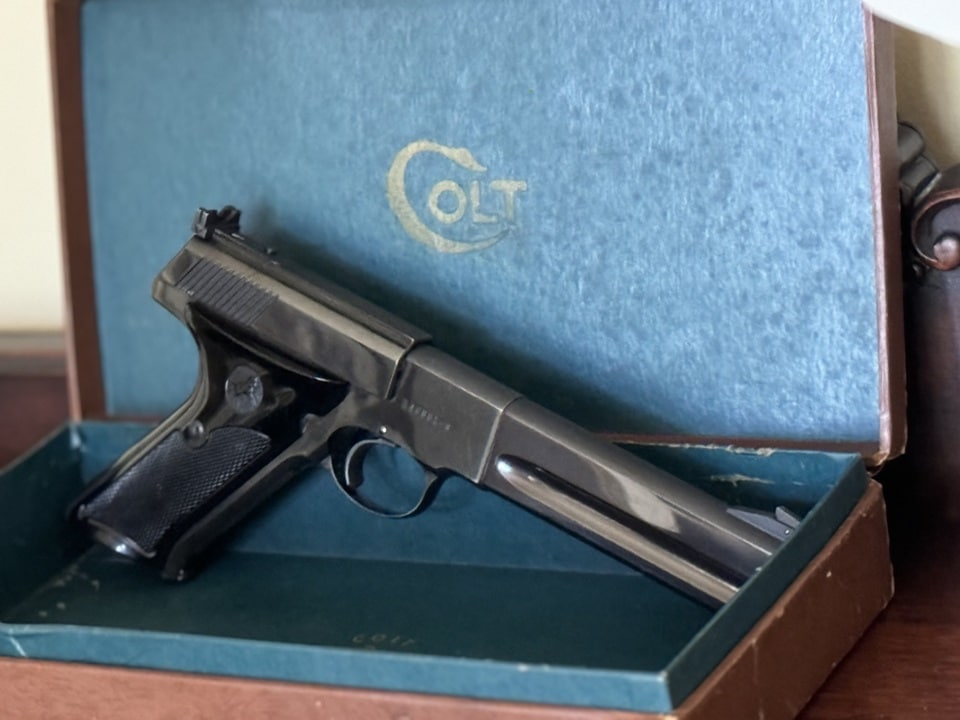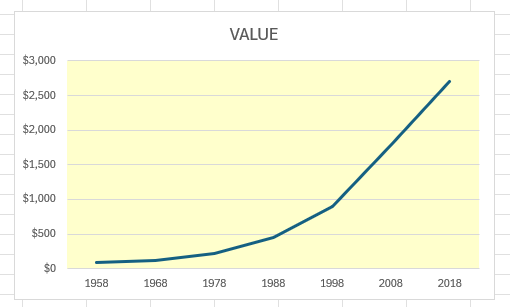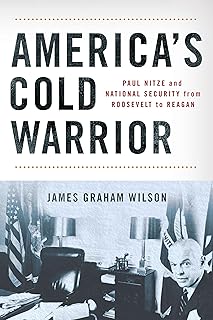The Colt Woodsman Match Target pistol is a renowned semi-automatic sporting firearm that holds a significant place in American gun history.
Manufactured by Colt's Manufacturing Company from 1915 to 1977, this pistol was the brainchild of John Moses Browning, one of the most influential gun designers of all time.
The Woodsman Match Target was specifically designed for precision shooting and quickly became a favorite among sports shooters for its accuracy and reliability. Over its production lifespan, the Woodsman underwent several design changes, divided into three distinct series. This article will delve into the history, design, and variations of each series of the Colt Woodsman Match Target pistol.

Series I: 1915–1941
The first series of the Colt Woodsman, often referred to as the "Pre-War" series, was introduced in 1915. This series laid the foundation for what would become a legendary line of pistols.My gun pictured in this article is a 1955 Series III gun. When I first started downsizing my collection, the first guns to go were all of the Pre-War guns. In order to make downsizing pallatable, I developed a plan whereby I would sell several guns and buy one. That way, my numbers went way down. My collection became much smaller, yet more valuable.
Design and Features
Frame and Grip Design: The Series I Woodsman featured a lightweight, streamlined frame with a slightly curved backstrap, providing a comfortable grip. The early models had a distinctive "pencil barrel," which was relatively thin and tapered.
Caliber and Magazine: Chambered in .22 Long Rifle, the Woodsman had a 10-round magazine, which was quite advanced for its time. The .22 LR cartridge made it ideal for target shooting and small game hunting.
Sights and Barrel: The Match Target variant, introduced later within the Series I period, featured a heavier barrel and adjustable sights, which significantly improved its accuracy for competitive shooting.
Trigger and Safety Mechanism: The trigger pull was smooth and consistent, a hallmark of Browning's designs. The pistol also included a manual safety lever located on the left side of the frame.
Variants
During this period, Colt introduced several variants to cater to different shooting needs:
- Target Model: Featured a 6 5/8 inch barrel and adjustable sights.
- Sport Model: Had a shorter barrel, typically around 4 1/2 inches, making it more suitable for casual shooters and hunters.
Notable Changes and Innovations
One of the most significant innovations of the Series I was the addition of the "floating chamber" design, which helped replicate the recoil of a larger caliber gun, enhancing the training value of the pistol.
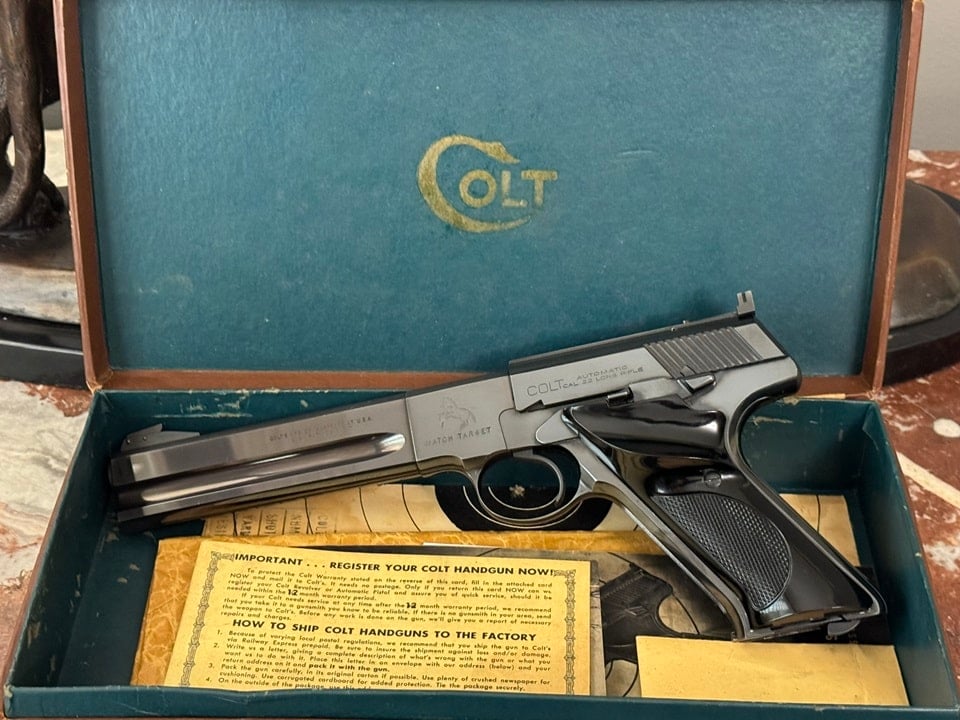
Series II: 1947–1955
The second series of the Colt Woodsman, known as the "Post-War" series, saw production resume after World War II. This series introduced several refinements and improvements over the original design. Again, my gun in the photos is a 1955 Third Series gun. I was in fact searching for a Series II gun when I discovered this unfired (other than the factory test fire) Series III example from 1955.
Design and Features
Frame and Ergonomics: The Series II Woodsman featured a redesigned frame with a straighter backstrap, which improved grip ergonomics and made the pistol more comfortable to shoot for extended periods.
Magazine Release and Safety: The magazine release was moved to the bottom of the grip, a change from the previous side-mounted release. The safety mechanism was also updated for easier operation.
Barrel and Sights: The Match Target models continued to feature heavy barrels and adjustable sights. Additionally, some models introduced a ribbed barrel design for added rigidity and accuracy.
Finish and Materials: Improved manufacturing techniques allowed for better finishes and materials, enhancing the durability and aesthetic appeal of the pistol.
Variants
The Series II introduced new variants and models to expand its appeal:
- Challenger Model: A budget-friendly version with simplified features but retaining the essential qualities of the Woodsman.
- Huntsman Model: Aimed at casual shooters and hunters, it featured a fixed rear sight and a simpler design.
Innovations
The Series II Woodsman incorporated a more robust extractor design and other minor internal improvements that enhanced reliability and ease of maintenance. These changes made the pistol even more popular among sports shooters and enthusiasts.
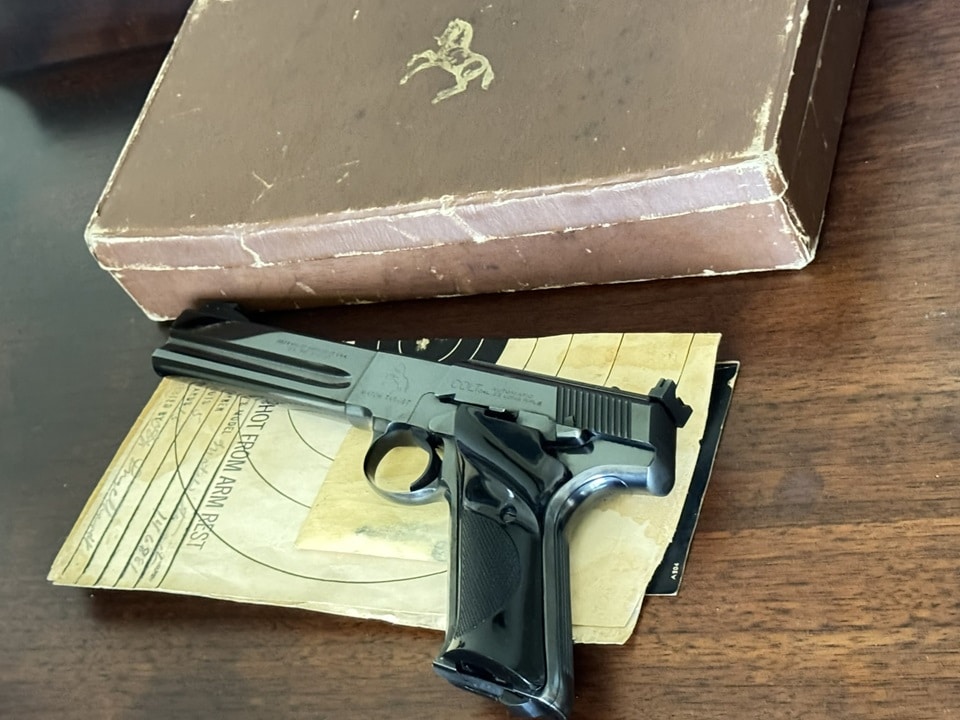
Series III: 1955–1977
The third and final series of the Colt Woodsman, produced from 1955 to 1977, represented the culmination of decades of design evolution and user feedback. When I was seeking out a Colt Woodsman Match Target gun, one of the things I looked at first was the grips. I wanted a gun from the Baby Boom Period (1946-1964), which meant it would have either Coltwood grips (1947-1950), injection-molded plastic grips (1950-1960) or walnut (1960-1964). The grips had to be pristine, and these black plastic grips on my 1955 gun are.
Design and Features
Frame and Grips: The Series III Woodsman featured a more modern, angular frame design with improved grip panels that offered better control and comfort. The backstrap was slightly arched, catering to a more natural grip angle.
Magazine and Safety: The magazine release was again relocated, this time to the heel of the grip, providing a more secure and intuitive release mechanism. The safety lever was redesigned for quicker and more reliable operation.
Barrel and Sights: The Match Target models in Series III continued to be equipped with heavy barrels and fully adjustable rear sights. Some models also featured an extended front sight for better target acquisition.
Trigger Mechanism: The trigger mechanism was refined to provide an even crisper and lighter pull, enhancing the shooting experience and accuracy.
Variants
Several notable variants were introduced in the Series III lineup:
- Targetsman Model: Featured adjustable sights and was aimed at the target shooting market.
- New Targetsman: An updated version with further refinements to the sights and barrel.
- Coltman Model: A special edition with unique finishes and limited production numbers.
Technological Advancements
During the Series III period, Colt utilized advanced manufacturing techniques and materials, which improved the overall quality and performance of the Woodsman pistols. These advancements included better heat treatment processes for critical components and the use of higher-quality steel alloys. By the end of the Baby Boom Period in 1964, cost-cutting measures became a priority at all gun manufacturing facilities.
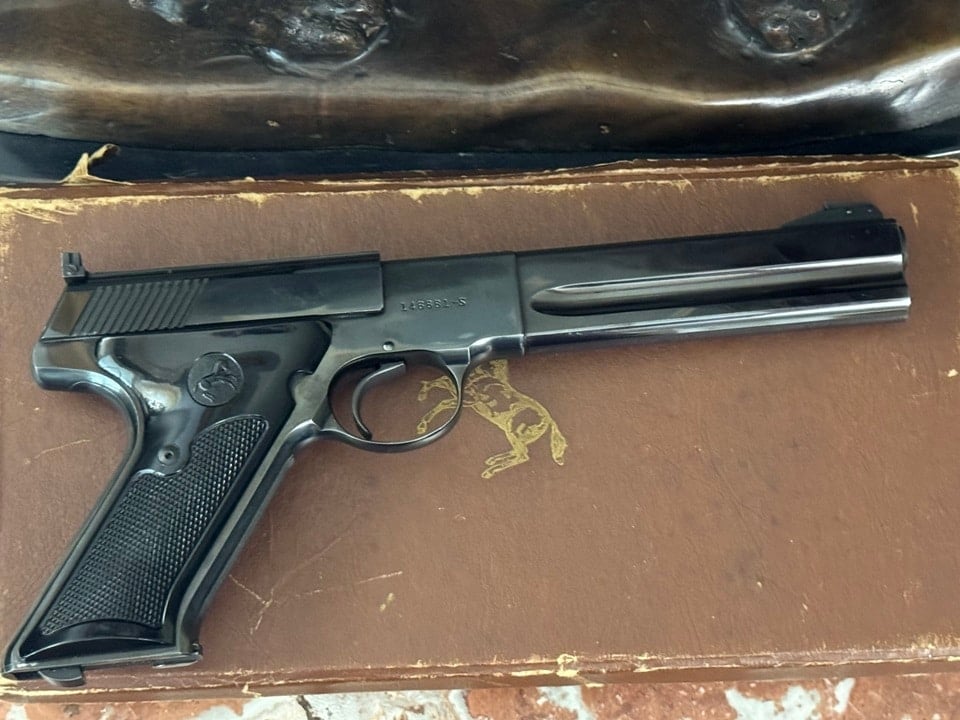
Legacy and Impact
The Colt Woodsman Match Target pistol holds a revered place in the history of firearms, not only for its superb design and performance but also for its impact on competitive shooting and sportsmanship. Each series brought significant advancements, reflecting the evolving needs and preferences of shooters over six decades. The only black mark on its record is the fact that William McMillan missed the 1956 Olympic Games due to a malfunction with his Colt Woodsman pistol during the U.S. trials. Four years later McMillan would take the Gold Medal in 25 Meter Rapid Fire at the 1960 Olympics in Rome.


